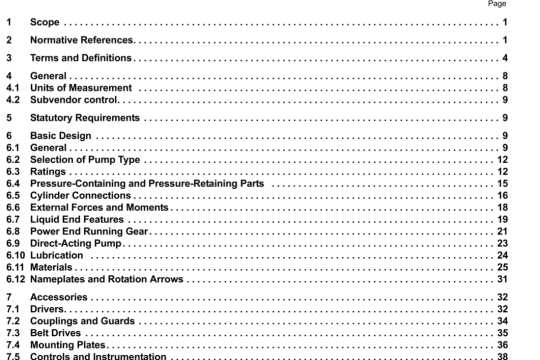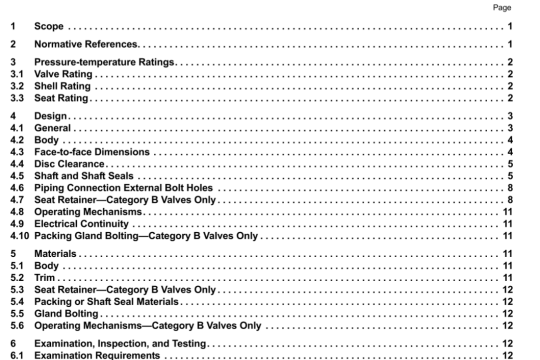API Spec 12J:2009 pdf download
API Spec 12J:2009 pdf download.Specification for Oil and Gas Separators.
A.1 General
Thés annex provides a general scussion of the functional requwements of oil and gas separators arid their controls
as used ii this specification.
A.2 Separator Components
The function of a separator is to provide removal of free gas from oil and/or water at a specific pressure and temperature, For efficient and stable operation over a wide range of conditions, a gas-liquid separator normally has the following features.
A.2.1 Primary Separation Section
Thés specification is for removing the bulk of the liquid in the inlet stream. Liquid slugs and large liquid particles are removed first to mmimlze gas turbulence and re-entrapment of liquid particles in preparation for the second step of separation. To do this, It Is usually necessary to absorb the momentum d d’ianga the direction of flow by some form of inlet baffling
A.2.2 Secondary Separation Section
The major separation pnnciple in this section is gravity settling of liquid from the gas stream after Its velocity has been reduced. The efficiency of this section depends on the gas and liquid properties, particle size and degree of gas turbulence. Some designs use internal baffling to reduce turbulence and to dissipate foam. The baffles may also act as droplet collectors.
A.2.3 Liquid Accumulator Section
The liquid(s) is (are) collected in thés section. The tiquid should have a ninimum of disturbance from the flowing gas stream. Sufficient cacity is necessary to allow for surges and to provide the retention time necessary for efficient separation of gas breaking out of solution and separation of free water from oil in three-phase separators. A vortex breaker may be located over the liquid outlet nozzle(s) to prevent gas or oil entrapment with the bottom liquid,
A.2.4 Mist Extraction Section
The mist extractor of the coalescing section can be one of several designs (a series of vanes, woven wire mesh pad or a centrifugal device). The mist extractor removes from the gas stream the small droplets (normally down to 10 micron diameter) of liquid before the gas leaves the vessel Liquid carryover is normally less than 0,1 gallon per
MMSCF.
A.2.5 Process Controls
The operating pressure may be controlled by a weight loaded, spring loaded, or pilot operated gas back pressure valve. Where the gas is being delivered to a pipeline, the minimum separator’ pressure is usually set by the transrmss4on or gathering system pressure. Separator’s should be equipped with one or more liquid level controls. Usually a liquid level control for the liquid accumutation section of two-phase separators activates a liquid dump valve to maintain the required liquid level. Two liquid level control systems are norn’ialy used for three-phase separators. Internal weirs and baffles are used in conjunction with these liquid level controls. Separators are equipped with gauge glasses or sight glasses to indicate one or two levels. A pressure gauge and thermometer well are usually installed on separators
A2.6 Relief Devices
All separators, regardless of size or p’essiire. shall be prnvided with pressure protective devices and set in accordance with ASME Code requirements. Multiple pressure relieving devices such as a pressure relief valve in conjunction with a rupture disk may be used to provide the necessary relieving capacity. The relief valve Is normally set at the MAWR The rupture disk is normally selected to relieve above the set pressure of the relief valve. The pressure relief devices need not be provided by the separator manufacturer, but over-pressure protection shall be provided prior to placing the separator in service. The purchaser should determine who has the responsibility to furnish relief devices.
A.2.7 Discharge Lines
Discharge lines from pressure relief devices should receive consideration on an individual basis. A detailed discussion is beyond the scope of tlis standard. Recommendations for discharge be consideration may be obtained from Appenthx M. Insta$at,on and Operobon, of the ASME Code as well as API 520 and API 521.
A.2.8 Other Controls and Accessories
When specitied by the purchaser, separators may be equipped with other controls and accessories such as the lolbowing:
a) inlet shut-in valve;
b) pressure sensor or control;
C) level sensor or control;
d) temperature sensor or control.




